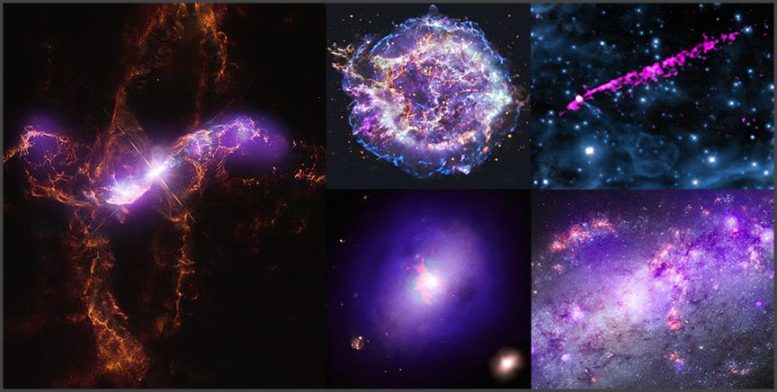An Expanse of Light – Dazzling New Multiwavelength Images of the Universe From NASA
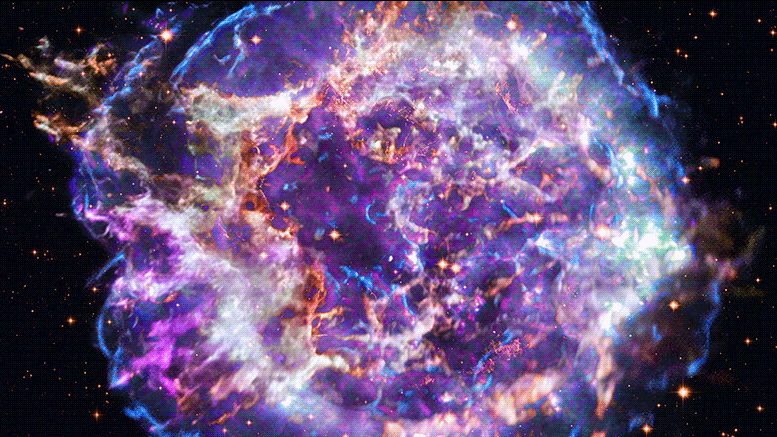
- A new gallery of images combining X-ray data from Chandra with those from other telescopes is being released.
- The objects range from a supernova remnant within the
![An Expanse of Light]()
This collection of images contains objects ranging from a supernova remnant within our Galaxy to an enormous galaxy cluster millions of light years away. Each image contains X-rays from Chandra in combination with data from other telescopes that capture different types of light. The objects are the binary system R Aquarii, the supernova remnant Cassiopeia A, the “Guitar Nebula” and its pulsar, the galaxy cluster Abell 2597, and the NGC 4490 galaxy. These images demonstrate how X-rays — colored differently in each image — are emitted by very hot and energetic objects throughout the universe. Credit: X-ray: NASA/CXC/SAO; Optical: NASA/STScI, Palomar Observatory, DSS; Radio: NSF/NRAO/VLA; H-Alpha: LCO/IMACS/MMTF
The recent launches of the
This gallery provides examples of the ways that different types of light from telescopes on the ground and in space can be combined. The common thread in each of these selections is data from NASA’s Chandra X-ray Observatory, illustrating how X-rays — which are emitted by very hot and energetic processes — are found throughout the Universe.
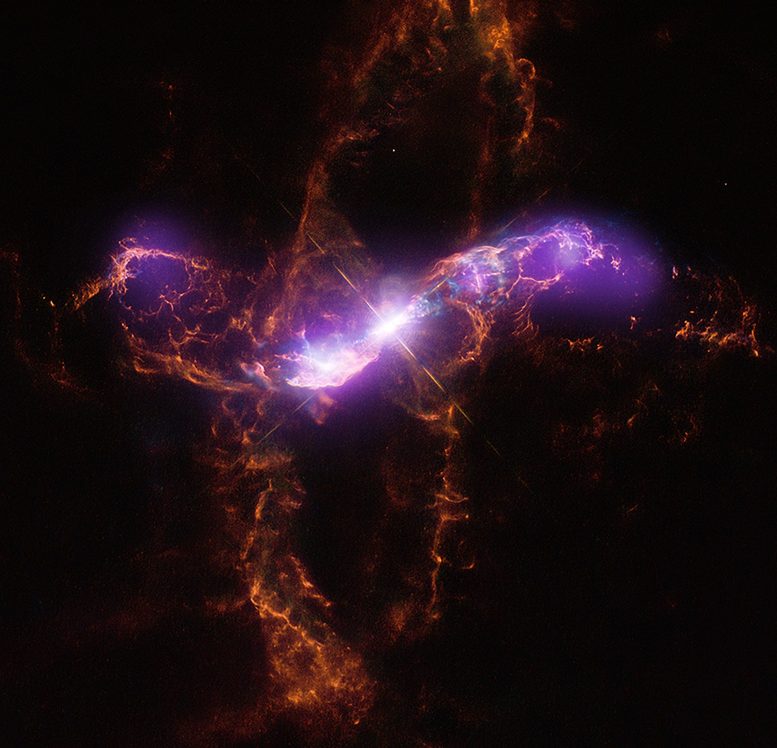
R Aquarii Composite. Credit: X-ray: NASA/CXC/SAO; Optical: NASA/STScI, Palomar Observatory, DSS; Radio: NSF/NRAO/VLA; H-Alpha: LCO/IMACS/MMTF
R Aquarii
This object is, in fact, a pair: a 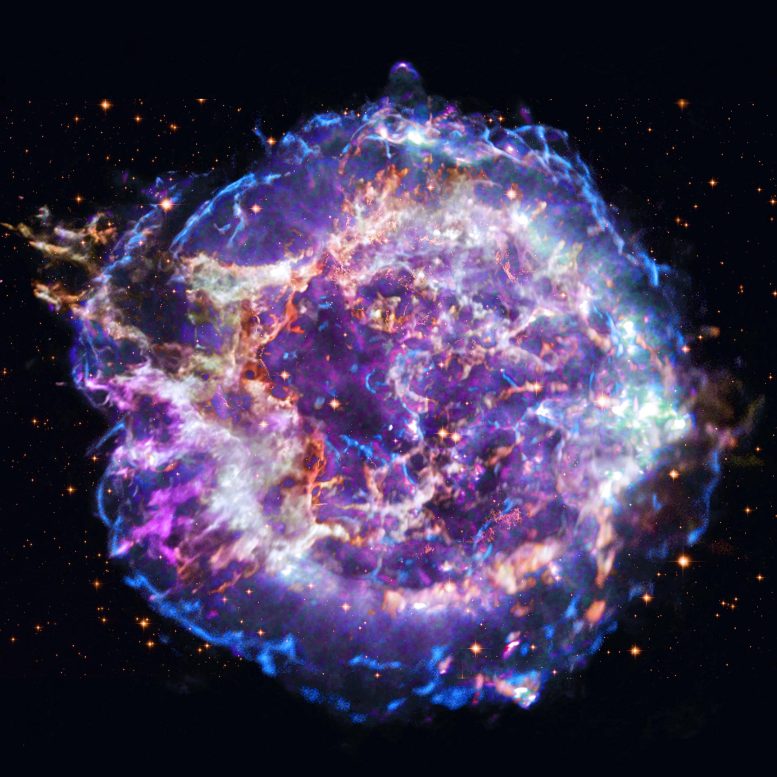
Cassiopeia A Composite. Credit: X-ray: NASA/CXC/SAO; Optical: NASA/STScI, Palomar Observatory, DSS; Radio: NSF/NRAO/VLA; H-Alpha: LCO/IMACS/MMTF
Cassiopeia A
Chandra’s observations of the Cassiopeia A supernova remnant have shown how individual elements from the exploded star are being cast off into space. In this image, X-rays reveal silicon (red), sulfur (yellow), calcium (green), and iron (light purple). The blue around the rim of the remnant reveals the blast wave from the explosion as it travels outward. This image also adds a layer of radio data of Cassiopeia A from the National Science Foundation’s Karl Jansky Very Large Array (dark purple, blue, and white) and an optical image from Hubble (orange). Like X-rays, radio waves can penetrate thick clouds of gas and dust that lie between Earth and Cassiopeia A, providing additional information about this famous stellar explosion.
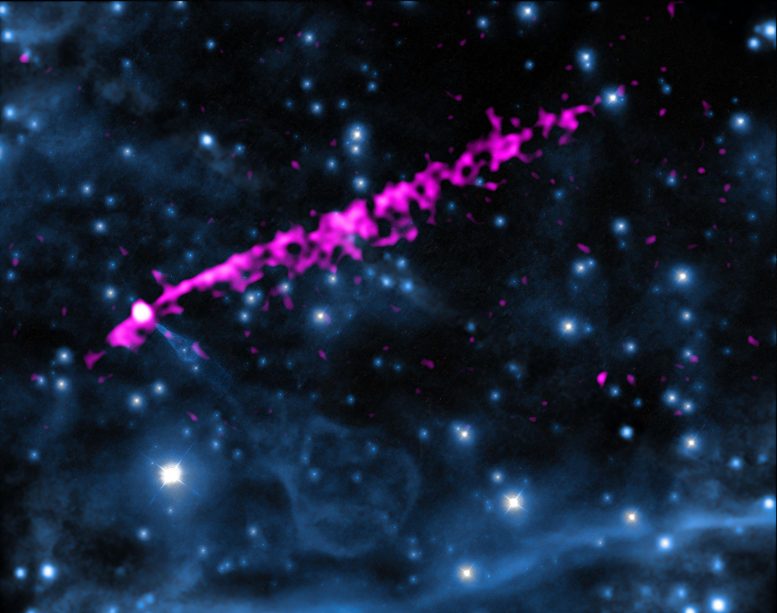
Guitar Nebula Composite. Credit: X-ray: NASA/CXC/SAO; Optical: NASA/STScI, Palomar Observatory, DSS; Radio: NSF/NRAO/VLA; H-Alpha: LCO/IMACS/MMTF
Guitar Nebula
For the last decade or so, astronomers have been puzzled by the alignment of some jets of X-rays coming from very fast-moving pulsars (that is, spinning neutron stars) that shoot out into interstellar space at odd, unexpected angles. This is what astronomers see with PSR B2224+65, a 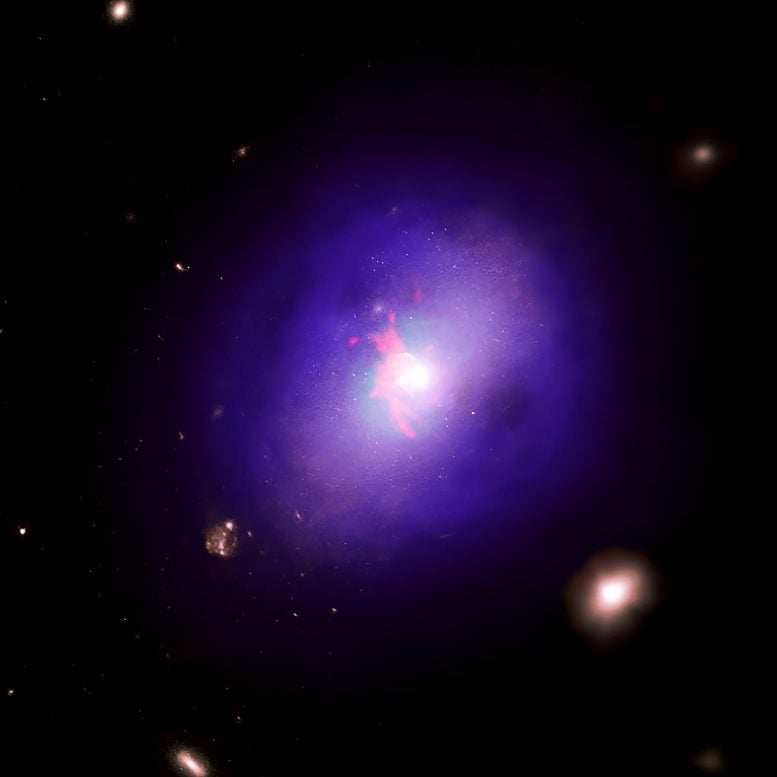
Abell 2597 Composite. Credit: X-ray: NASA/CXC/SAO; Optical: NASA/STScI, Palomar Observatory, DSS; Radio: NSF/NRAO/VLA; H-Alpha: LCO/IMACS/MMTF
Abell 2597
Galaxy clusters, the largest structures in the universe held together by gravity, are dynamic environments containing individual galaxies and huge amounts of hot gas and dark matter. Often, an enormous 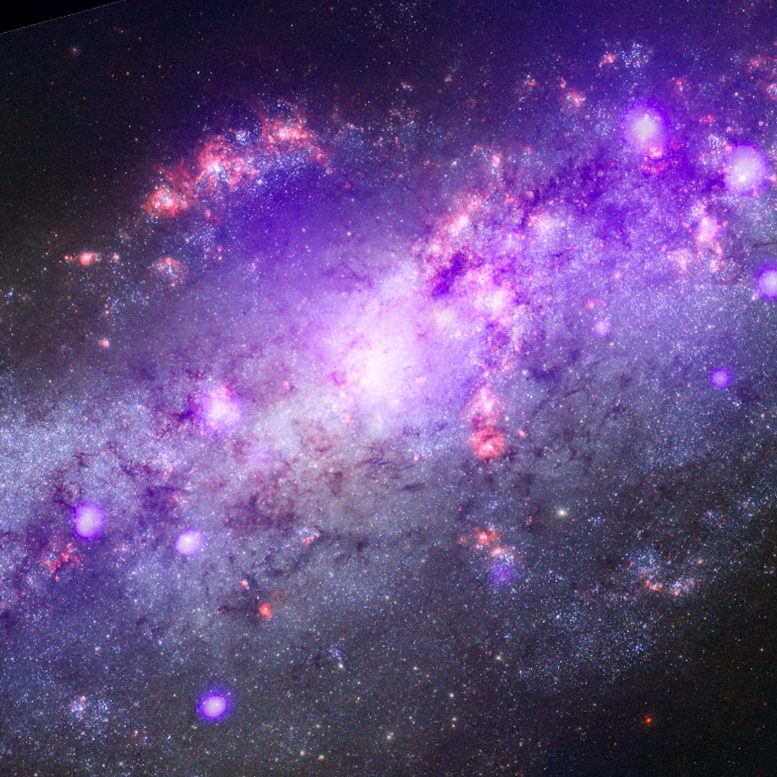
NGC 4490 Composite. Credit: X-ray: NASA/CXC/SAO; Optical: NASA/STScI, Palomar Observatory, DSS; Radio: NSF/NRAO/VLA; H-Alpha: LCO/IMACS/MMTF


